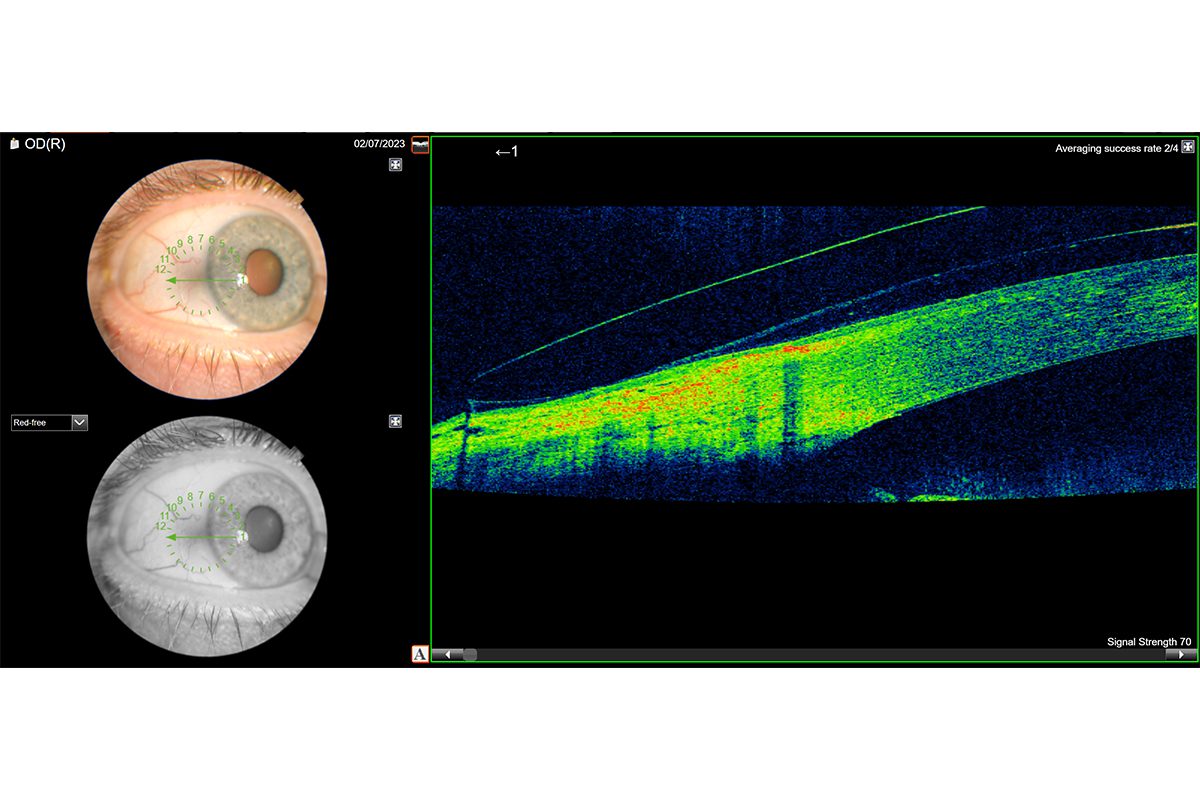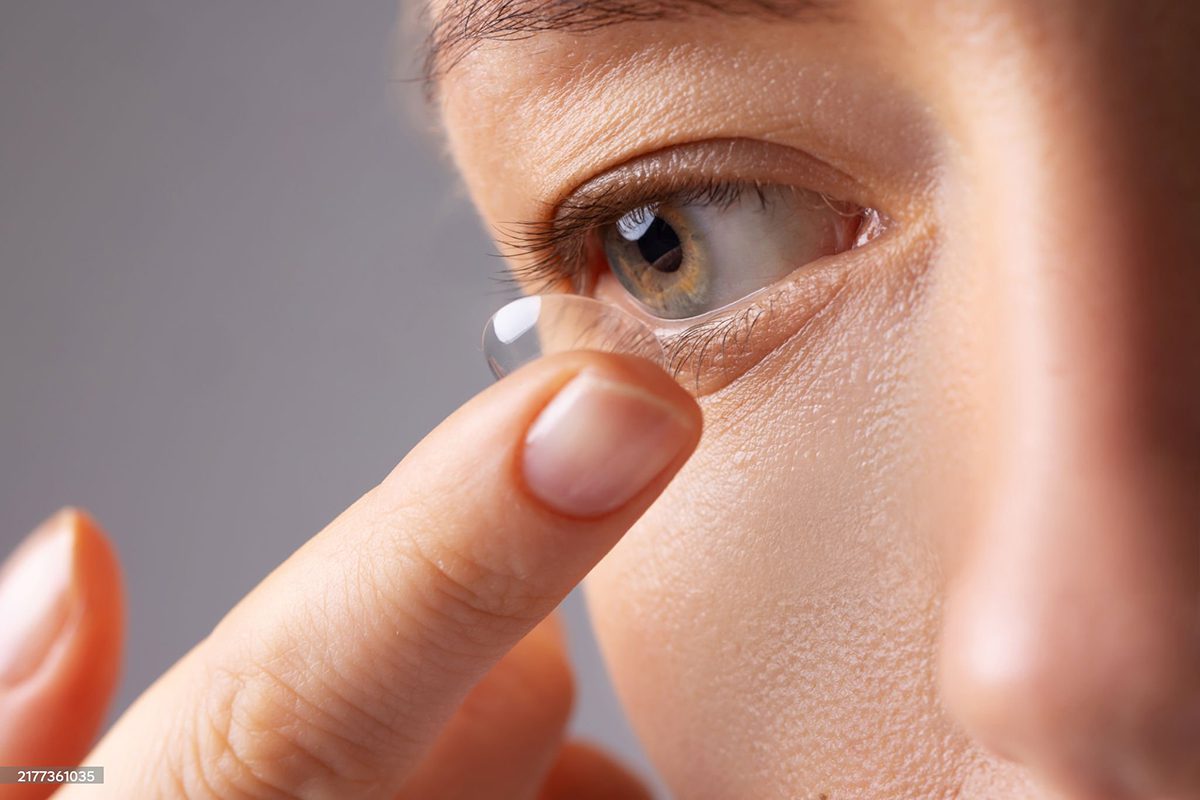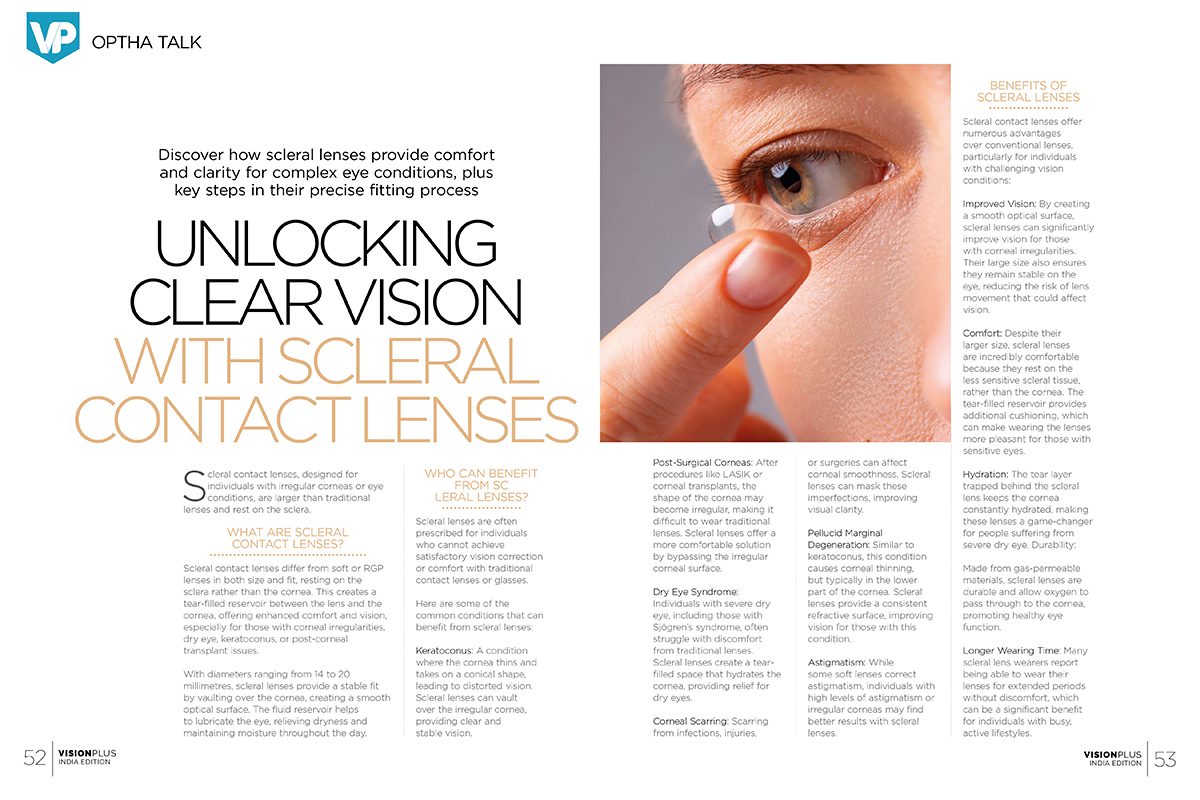
Unlocking Clear Vision With Scleral Contact Lenses
Discover how scleral lenses provide comfort and clarity for complex eye conditions, plus key steps in their precise fitting process
Scleral contact lenses, designed for individuals with irregular corneas or eye conditions, are larger than traditional lenses and rest on the sclera.
What Are Scleral Contact Lenses?
Scleral contact lenses differ from soft or RGP lenses in both size and fit, resting on the sclera rather than the cornea. This creates a tear-filled reservoir between the lens and the cornea, offering enhanced comfort and vision, especially for those with corneal irregularities, dry eye, keratoconus, or post-corneal transplant issues.
With diameters ranging from 14 to 20 millimetres, scleral lenses provide a stable fit by vaulting over the cornea, creating a smooth optical surface. The fluid reservoir helps to lubricate the eye, relieving dryness and maintaining moisture throughout the day.
Who Can Benefit from Scleral Lenses?
Scleral lenses are often prescribed for individuals who cannot achieve satisfactory vision correction or comfort with traditional contact lenses or glasses.
Here are some of the common conditions that can benefit from scleral lenses:
Keratoconus: A condition where the cornea thins and takes on a conical shape, leading to distorted vision. Scleral lenses can vault over the irregular cornea, providing clear and
stable vision.
Post-Surgical Corneas: After procedures like LASIK or corneal transplants, the shape of the cornea may become irregular, making it difficult to wear traditional lenses. Scleral lenses offer a more comfortable solution by bypassing the irregular corneal surface.
Dry Eye Syndrome: Individuals with severe dry eye, including those with Sjögren’s syndrome, often struggle with discomfort from traditional lenses. Scleral lenses create a tear-filled space that hydrates the cornea, providing relief for dry eyes.
Corneal Scarring: Scarring from infections, injuries, or surgeries can affect corneal smoothness. Scleral lenses can mask these imperfections, improving visual clarity.
Pellucid Marginal Degeneration: Similar to keratoconus, this condition causes corneal thinning, but typically in the lower part of the cornea. Scleral lenses provide a consistent refractive surface, improving vision for those with this condition.
Astigmatism: While some soft lenses correct astigmatism, individuals with high levels of astigmatism or irregular corneas may find better results with scleral lenses.
 Benefits of Scleral Lenses
Benefits of Scleral Lenses
Scleral contact lenses offer numerous advantages over conventional lenses, particularly for individuals with challenging vision conditions:
Improved Vision: By creating a smooth optical surface, scleral lenses can significantly improve vision for those with corneal irregularities. Their large size also ensures they remain stable on the eye, reducing the risk of lens movement that could affect vision.
Comfort: Despite their larger size, scleral lenses are incredibly comfortable because they rest on the less sensitive scleral tissue, rather than the cornea. The tear-filled reservoir provides additional cushioning, which can make wearing the lenses more pleasant for those with sensitive eyes.
Hydration: The tear layer trapped behind the scleral lens keeps the cornea constantly hydrated, making these lenses a game-changer for people suffering from severe dry eye. Durability:
Made from gas-permeable materials, scleral lenses are durable and allow oxygen to pass through to the cornea, promoting healthy eye function.
Longer Wearing Time: Many scleral lens wearers report being able to wear their lenses for extended periods without discomfort, which can be a significant benefit for individuals with busy, active lifestyles.
The Fitting Process
Fitting scleral contact lenses requires expertise and precision, as an improper fit can lead to discomfort, poor vision, and even damage to the eye. The fitting process is highly individualised and involves several key steps:
Step 1: Eye Examination
Before fitting scleral lenses, the optometrist or ophthalmologist performs a thorough eye examination. This includes assessing the corneal shape, ocular surface health, and tear film production.
Specialised diagnostic equipment, such as corneal topography, is used to map the corneal surface, allowing the practitioner to create a custom lens that fits the unique curvature of the patient’s eye.
Step 2: Lens Selection and Trial Fitting
Scleral lenses come in various diameters and curvatures, so the practitioner will select an initial trial lens based on the patient's corneal measurements.
The lens is then placed on the eye, and the fit is assessed using a slit lamp, a microscope that allows the practitioner to examine the eye under magnification.
The practitioner will check the lens's alignment, ensuring it vaults properly over the cornea without bearing too much weight on the sclera. They will also assess the amount of fluid between the lens and the cornea, as too little or too much can affect both comfort and vision.
Step 3: Adjustments And Customisation
Based on the initial fitting, the practitioner may make adjustments to the lens's curvature, diameter, or edge design.
Some patients may need multiple trial lenses to achieve the optimal fit. Customisation is key, as a perfectly fitted scleral lens ensures both comfort and visual clarity.
Step 4: Training and Follow-Up
Once fitted, patients are trained on inserting, removing, and caring for their scleral lenses, which require specific handling techniques.
Follow-up visits are crucial to monitor eye health and ensure the lenses maintain their proper fit over time. Scleral contact lenses provide transformative benefits for individuals with irregular corneas and severe dry eye, offering superior comfort, improved vision, and hydration.
Proper fitting and care are essential for optimal outcomes. Collaborating with an experienced eye care professional allows patients to enjoy clearer vision and enhanced comfort daily.







